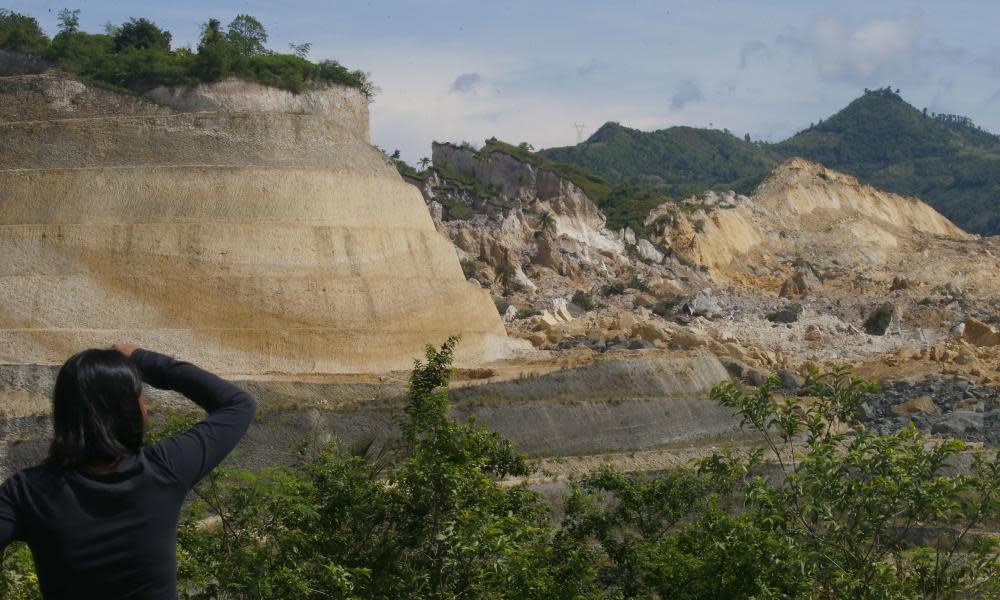Philippines villages buried by landslide after Typhoon Mangkhut

Dozens of people have been buried alive and at least 22 have died after a landslide engulfed two villages in the Philippines, triggered by extreme weather conditions in the aftermath of Typhoon Mangkhut.
At least 30 houses were crushed under earth and rubble when a hillside collapsed in Naga, Cebu province, on Thursday. About 50 people were reported to be still trapped.
Eight people were rescued from their homes by Thursday night, with some alerting rescuers to their location beneath the rubble by texting family members, according to the local police chief inspector, Roderick Gonzales.
“There were signs of life. Some of them managed to send text messages,” Gonzales told reporters.
This was the second fatal landslide in the Philippines this week as a result of Typhoon Manghkut. In Itogon, 60 people – mostly miners and their families – were buried after a landslide buried a chapel where they had sheltered from the typhoon. The death toll is currently 22 but rescue efforts continued on Friday to recover all the bodies and this number could rise.
Both landslides occurred on land where mining was carried out, and President Rodrigo Duterte announced the government would be investigating whether the quarrying operations had destabilised the land and contributed to the disasters. “If I were to try to do my thing I will close all mining in the Philippines,” Duterte said in a televised meeting of the government’s disaster response team.
While the Cebu region was not directly hit by the destructive typhoon, which swept through the Philippines last weekend, flattening houses and killing 88 people, it had led to an increase in monsoon rains, which may have loosened the mountainside in Naga, an area not usually known for landslides. Families in the area had been evacuated before the typhoon but had returned to their homes when it became clear Cebu would be out of the typhoon’s path.
“We’re really hoping we can still recover them alive,” said the Naga City mayor, Kristine Vanessa Chiong, of those still buried. About 600 residents of the area were evacuated again on Thursday as the risk of further landslides remained high.
Cristita Villarba, a 53-year-old resident, described how she had heard a roar and then felt the ground shake. “It was like an earthquake and there was this thundering, loud banging sound. All of us ran out,” she said.
She emerged to see the home of her brother, his children and grandchildren had been buried. “Many of our neighbours were crying and screaming for help. Some wanted to help those who got hit but there was too much earth covering the houses, including my brother’s,” she said.
A team of 100 rescuers worked overnight trying to find survivors and bodies, but the ground was still precarious and the rescue work was “very dangerous”, according to the police chief. “We’re running out of time. The ground in the area is still vibrating. We’re striking a balance between intensifying our rescue efforts and ensuring the safety of our rescuers,” Naga City councilor Carmelino Cruz said.
Presidential spokesman Harry Roque said the government would “do everything to alleviate the grief of the victims. We will see how we can prevent such occurrences in the future.”

 Yahoo News
Yahoo News 
